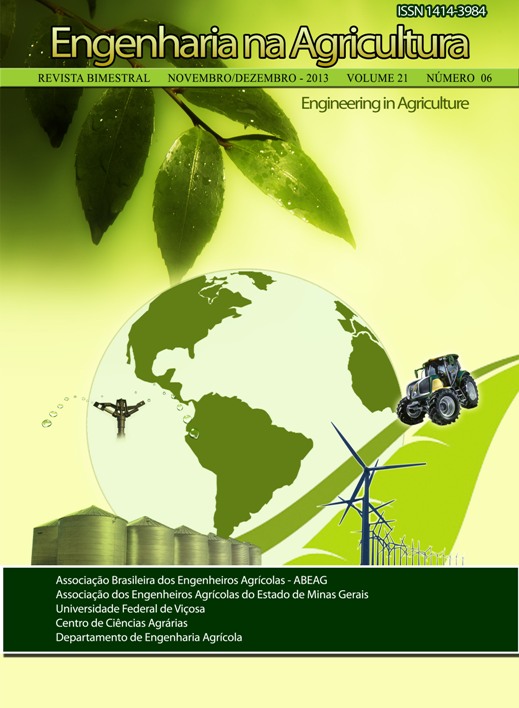SINAIS ELÉTRICOS COMO FERRAMENTA PARA SEPARAÇÃO DE MINHOCAS (EISENIA FOETIDA) DO HÚMUS
DOI:
https://doi.org/10.13083/reveng.v21i6.411Keywords:
Vermiculture, vermicomposting, electricity pulsing, earthworms.Abstract
Melhorar eficiência do processo de separação de minhocas do húmus é importante porque este é o estágio que requer mais mão-de-obra e também exige mais tempo. Neste trabalho, as mesmas técnicas usadas na pesca elétrica foram utilizadas com adaptações para a separação de minhocas. Assim, avaliou-se o efeito de um campo elétrico, produzido por sinais elétricos controlados, no deslocamento de minhocas Eisenia fœtida. O estudo foi realizado no Laboratório de Energia na Agricultura do Departamento de Engenharia Agrícola da Universidade Federal de Viçosa, Viçosa, MG. As minhocas se deslocaram preferencialmente para o anodo, em mais de 90 % das observações. A partir dos resultados obtidos, pode-se afirmar que a utilização de pulsos elétricos controlados é viável tecnicamente para separação de minhocas do húmus.Downloads
Downloads
Additional Files
Published
How to Cite
Issue
Section
License
Authors who publish with this journal agree to the following terms:
The author(s) authorize(s) the publication of the text in the journal;
The author(s) ensure(s) that the contribution is original and unpublished and that it is not in the process of evaluation by another journal;
The journal is not responsible for the views, ideas and concepts presented in articles, and these are the sole responsibility of the author(s);
The publishers reserve the right to make textual adjustments and adapt texts to meet with publication standards.
From submission, the author is fully conceding the paper's patrimonial rights to the publication, but retaining the owner of its moral rights (authorship and paper's identification) according to Creative Commons Attribution-Noncommercial.








 Licensed by
Licensed by 